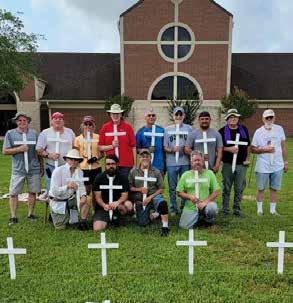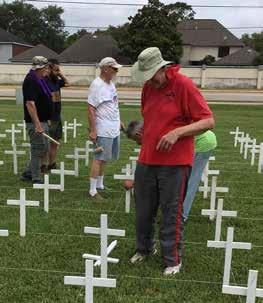
6 minute read
Rhythms of the Bay
BY GH ANDREW PHOTOS BY GH ANDREW FAB 40
We’ve noticed that the returning events following the C-19 have been over the top and such it was with the Fab 40 Get Back show in May at the Discovery Green Park downtown. This lineup, led by Dave Bassingame, has a strong returning cast of musicians including an orchestra with over 20 members with Sitar players plus, this year, a live chorus. Pretty cool, eh?
Advertisement
This show featured the Beatles album, Let It Be performed in its entirety plus an assortment of other Beatles favorites. (Let It Be was recently featured in Peter Jackson’s documentary, Get Back.) Local relevance of this show, in addition to good music, is the makeup of the band’s members - a cast of volunteers from across the greater Houston metroplex including the Galveston Bay region. This series of one-off performances has spanned over the decade and features iconic albums from the ‘60s with their original scores (remember albums?).
Sadness struck the group a mere week before showtime with the sudden passing of co-front man John Senderling of Taylor Lake Village. John was musically connected with many and, notably, helping others through the Houston Music Foundation’s Artists for Artists crisis relief fund. Locally, Senderling performed with Andy and The Dreamsicles both on stage and at the Oleanders Festival. He leaves behind a young family and many friends and fans.
The reach of the Fab 40 runs deep and answering the last-minute show call was Johnny Ono, who has appeared on the Greater Houston music scene, and, locally on more than several occasions, with the band Already Gone at Jackie’s Bar & Grill. Ono fit in perfectly and it was on- with-the-show attended by a full house under the Houston skyline. This was an over-the-top performance that went down on a relaxing Mother’s Day Sunday evening. Well done, Johnny!
Let It Be was the Beatles hit final album before the band broke up and scattering. Houston’s Fab 40’s passion for the music is sincere and appreciated by those who attended. The band’s cast has changed over the decade and the core team of members make room on the stage for new musicians. The members today were allowed to share the stage, back then, as youth, thus passing along the music across generations. Sounds like good karma to me….. Play on!!!
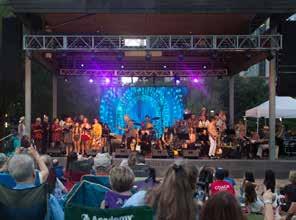

JOHNNY ONO JOHN SENDERLING


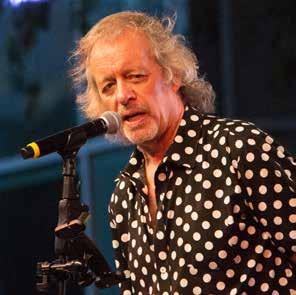
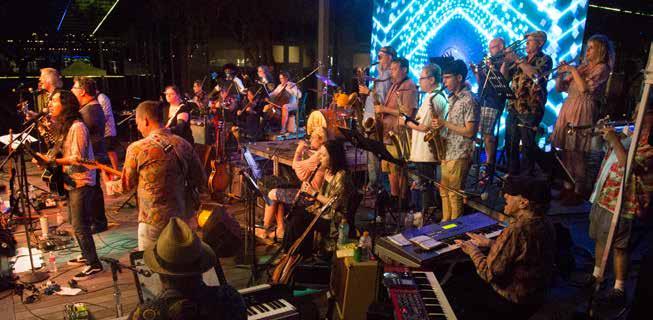
Almost 1,200 graduate at UHCL
Nearly 1,200 University of Houston-Clear Lake students were presented their degrees during ceremonies Saturday, May 14 at 10 a.m. for the Colleges of Education and Business, and 3 p.m. for the Colleges of Science and Engineering and Human Sciences and Humanities at NRG Arena, 1 NRG Parkway, Houston.
Of the 1,195 graduates, 775 received their undergraduate degree, and 420 received graduate degrees.
The Colleges of Education and Business conferred degrees to 183 and 388 graduates, respectively, including nine COE graduates who received doctorates. The College of Science and Engineering conferred 277 degrees, and the College of Human Sciences and Humanities 388.
Student Government Association President Hiba Loya, who received her Bachelor of Science in Management from the College of Business, delivered the commencement address for the earlier ceremony. During her time at UHClear Lake, she served in Student Government for two years, and interned at the Tahirih Justice Center, a national nonprofit that services immigrant survivors fleeing gender-based violence. She has been accepted to the University of Houston Law Center.
The commencement speaker for the second ceremony was Isaiah McDuffie, who received his Bachelor of Science in Criminal Justice and Criminology from the College of Human Sciences and Humanities. He works as a youth development coach in Harris County Juvenile Probation Department, and trains others in restorative justice practices and serves in ministry for incarcerated youth. He’s currently a substitute teacher at Second Baptist School and is about to become the father of a little girl.
This spring's graduates joined over 77,000 others who have graduated from the university. UHCL began as an upper-level university in 1974, admitting juniors, seniors and graduate students. The university expanded to admit underclassmen in 2014.
Ike Dike bill gets nod from both Senate and House committees
By Mary Alys Cherry
The $31 billion Ike Dike project to protect the Galveston Bay area from storm surge found itself swimming in favorable waters in recent days as bills advancing the project to a vote on both the Senate and House floors in Washington was passed by Senate and House committees.
Known as the Water Resources Development Act of 2022, the bill passed the Senate Environment and Public Works Committee unanimously, indicating that it probably will face little opposition as it moves forward. Among the several U.S. Army Corps of Engineers projects across the country in the bill is the Coastal Texas Protection and Restoration Feasibility Study -- the largest engineering study recommendation of its kind the Corps has ever proposed.
Meanwhile, in the House, the Transportation and Infrastructure Committee voted to move its Water Resources Development Act of 2022 toward a vote of the full House.
After the bills pass both houses of Congress, they will be merged for a final vote by the two bodies.
NAMED AFTER STORM
It got its name, the Ike Dike Project, after Hurricane Ike, a Category 2 storm, and its 22-foot surge that devastated the Bay Area in 2008. Later that year, Dr. Bill Merrell, Marine Sciences chairman at Texas A&M University at Galveston, proposed a coastal barrier designed to extend protection provided by the Galveston Seawall to the rest of Galveston Island and along the Bolivar Peninsula via a 17- foot-tall revetment near the beach.
The project also would include flood gates at the entrance to the Houston, Texas City, and Galveston ship channels and at San Luis pass to provide an additional barrier against storm surges.
But despite the fact a major hurricane hits the area every 12-14 years, creating the obvious need for the proposed barrier, the project dragged on for a number of years while Congress spent $15 billion giving storm surge protection to New Orleans only five years after Hurricane Katrina and $4.2 billion to the New York region shortly after Hurricane Sandy.
Some of the ideas in the Ike Dike concept are part of the Corps plan, but they are not the entire plan, a corps spokesman said. Merrell’s plan called for a set of gates but the Corps’ plan includes a multi-gate system across the mouth of Galveston Bay, surrounded by levees with lift gates that can rise or be lowered, depending on the level of the surge.
MANY IDEAS
"We brought people in from all over the world who've actually done this before. From Venice, from England, from the Netherlands and from St. Petersburg," the spokesman said. A major purpose was to protect the country’s largest petrochemical complex found along the Houston Ship Channel.
Once Congress approves and provides the needed funds, the project will take approximately 15 years to complete and will cost between $23 billion and $32 billion. The Corps of Engineers has been working on the project for a number of years.
remembering and honoring on memorial day
